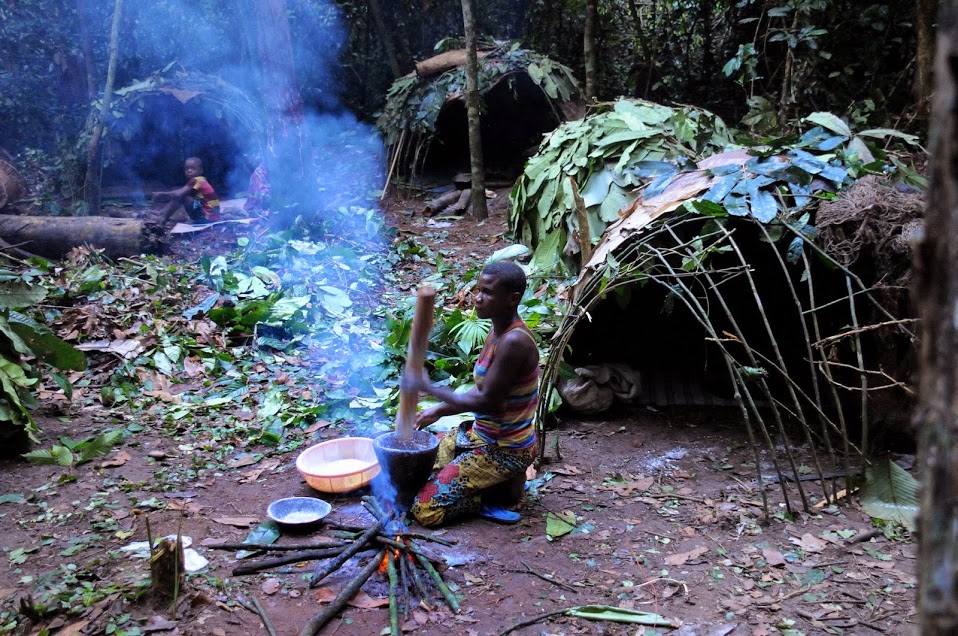|
Fruitarian
Fruitarianism () is a diet that consists primarily of consuming fruits and possibly nuts and seeds, but without any animal products. Fruitarian diets are subject to criticism and health concerns. Fruitarianism may be adopted for different reasons, including ethical, religious, environmental, cultural, economic, and presumed health benefits. A fruitarian diet may increase the risk of nutritional deficiencies, such as reduced intake of vitamin B12, calcium, iron, zinc, omega-3 or protein. Varieties Some fruitarians will eat only what falls naturally from a plant; that is, plant foods that can be harvested without killing or harming the plant. These foods consist primarily of culinary fruits, nuts, and seeds. Some do not eat grains, believing it is unnatural to do so, and some fruitarians feel that it is improper for humans to eat seeds as they contain future plants, or nuts and seeds, or any food besides juicy fruit. Others believe they should eat only plants that spread seed ... [...More Info...] [...Related Items...] OR: [Wikipedia] [Google] [Baidu] |
Raw Veganism
Raw foodism, also known as rawism or a raw food diet, is the dietary practice of eating only or mostly food that is uncooked and unprocessed. Depending on the philosophy, or type of lifestyle and results desired, raw food diets may include a selection of fruits, vegetables, nuts, seeds, eggs, fish, meat, and dairy products. The diet may also include simply processed foods, such as various types of sprouted seeds, cheese, and fermented foods such as yogurts, kefir, kombucha, or sauerkraut, but generally not foods that have been pasteurized, homogenized, or produced with the use of synthetic pesticides, fertilizers, solvents, and food additives. The British Dietetic Association has described raw foodism as a fad diet. Raw food diets, specifically raw veganism, may diminish intake of essential minerals and nutrients, such as vitamin B12. Claims made by raw food proponents are pseudoscientific. Varieties Raw food diets are diets composed entirely or mostly of food that ... [...More Info...] [...Related Items...] OR: [Wikipedia] [Google] [Baidu] |
Veganism
Veganism is the practice of abstaining from the use of animal products and the consumption of animal source foods, and an associated philosophy that rejects the commodity status of animals. A person who practices veganism is known as a vegan. The foundations of veganism include ethical, moral, environmental, health and humanitarian arguments. Strict veganism excludes all forms of #Animal use, animal use, whether in agriculture for labour or food (e.g., meat, fish and other animal seafood, eggs, dairy products such as milk or cheese, and honey), in clothing and industry (e.g., leather, wool, fur, and some cosmetics), in entertainment (e.g., zoos, exotic pets, and circuses), or in services (e.g., guide dogs, police dogs, hunting dogs, working animals, and animal testing, including medical experimentation and the use of pharmaceuticals derived from or tested on animals). A person who practices veganism may do so for personal health benefits or to reduce animal deaths, minimize ... [...More Info...] [...Related Items...] OR: [Wikipedia] [Google] [Baidu] |
Natural Foodstuff 004
Nature is an inherent character or constitution, particularly of the ecosphere or the universe as a whole. In this general sense nature refers to the laws, elements and phenomena of the physical world, including life. Although humans are part of nature, human activity or humans as a whole are often described as at times at odds, or outright separate and even superior to nature. During the advent of modern scientific method in the last several centuries, nature became the passive reality, organized and moved by divine laws. With the Industrial Revolution, nature increasingly became seen as the part of reality deprived from intentional intervention: it was hence considered as sacred by some traditions ( Rousseau, American transcendentalism) or a mere decorum for divine providence or human history ( Hegel, Marx). However, a vitalist vision of nature, closer to the pre-Socratic one, got reborn at the same time, especially after Charles Darwin. Within the various uses of the wo ... [...More Info...] [...Related Items...] OR: [Wikipedia] [Google] [Baidu] |
Zinc
Zinc is a chemical element; it has symbol Zn and atomic number 30. It is a slightly brittle metal at room temperature and has a shiny-greyish appearance when oxidation is removed. It is the first element in group 12 (IIB) of the periodic table. In some respects, zinc is chemically similar to magnesium: both elements exhibit only one normal oxidation state (+2), and the Zn2+ and Mg2+ ions are of similar size. Zinc is the 24th most abundant element in Earth's crust and has five stable isotopes. The most common zinc ore is sphalerite (zinc blende), a zinc sulfide mineral. The largest workable lodes are in Australia, Asia, and the United States. Zinc is refined by froth flotation of the ore, roasting, and final extraction using electricity ( electrowinning). Zinc is an essential trace element for humans, animals, plants and for microorganisms and is necessary for prenatal and postnatal development. It is the second most abundant trace metal in humans after iron, an import ... [...More Info...] [...Related Items...] OR: [Wikipedia] [Google] [Baidu] |
Iron
Iron is a chemical element; it has symbol Fe () and atomic number 26. It is a metal that belongs to the first transition series and group 8 of the periodic table. It is, by mass, the most common element on Earth, forming much of Earth's outer and inner core. It is the fourth most abundant element in the Earth's crust, being mainly deposited by meteorites in its metallic state. Extracting usable metal from iron ores requires kilns or furnaces capable of reaching , about 500 °C (900 °F) higher than that required to smelt copper. Humans started to master that process in Eurasia during the 2nd millennium BC and the use of iron tools and weapons began to displace copper alloys – in some regions, only around 1200 BC. That event is considered the transition from the Bronze Age to the Iron Age. In the modern world, iron alloys, such as steel, stainless steel, cast iron and special steels, are by far the most common industrial metals, due to their mechan ... [...More Info...] [...Related Items...] OR: [Wikipedia] [Google] [Baidu] |
Calcium
Calcium is a chemical element; it has symbol Ca and atomic number 20. As an alkaline earth metal, calcium is a reactive metal that forms a dark oxide-nitride layer when exposed to air. Its physical and chemical properties are most similar to its heavier homologues strontium and barium. It is the fifth most abundant element in Earth's crust, and the third most abundant metal, after iron and aluminium. The most common calcium compound on Earth is calcium carbonate, found in limestone and the fossils of early sea life; gypsum, anhydrite, fluorite, and apatite are also sources of calcium. The name comes from Latin ''calx'' " lime", which was obtained from heating limestone. Some calcium compounds were known to the ancients, though their chemistry was unknown until the seventeenth century. Pure calcium was isolated in 1808 via electrolysis of its oxide by Humphry Davy, who named the element. Calcium compounds are widely used in many industries: in foods and pharmaceuticals for ... [...More Info...] [...Related Items...] OR: [Wikipedia] [Google] [Baidu] |
Columbia University
Columbia University in the City of New York, commonly referred to as Columbia University, is a Private university, private Ivy League research university in New York City. Established in 1754 as King's College on the grounds of Trinity Church (Manhattan), Trinity Church in Manhattan, it is the oldest institution of higher education in New York (state), New York and the fifth-First university in the United States, oldest in the United States. Columbia was established as a Colonial colleges, colonial college by royal charter under George II of Great Britain. It was renamed Columbia College (New York), Columbia College in 1784 following the American Revolution, and in 1787 was placed under Trustees of Columbia University in the City of New York, a private board of trustees headed by former students Alexander Hamilton and John Jay. In 1896, the campus was moved to its current location in Morningside Heights and renamed Columbia University. Columbia is organized into twenty schoo ... [...More Info...] [...Related Items...] OR: [Wikipedia] [Google] [Baidu] |
Nutritionist
A nutritionist is a person who advises others on matters of food and Human nutrition, nutrition and their impacts on health. Some people specialize in particular areas, such as sports nutrition, public health, or animal nutrition, among other disciplines. In many Jurisdiction, jurisdictions, a person can claim to be a nutritionist even without any training, education, or professional license, in contrast to a dietitian, who has a university degree, professional license, and certification for professional practice. Regulation of the title "nutritionist" The professional practice of being a ''dietitian'' (also spelled ''dietician'' in the US) is different from a ''nutritionist''. In many countries and jurisdictions, the title ''nutritionist'' is not subject to statutory healthcare provider requisites, professional regulation; thus, any person may self-title as a nutritionist or nutrition expert, even if self-taught and professionally uncertified. In the United Kingdom, Australia, part ... [...More Info...] [...Related Items...] OR: [Wikipedia] [Google] [Baidu] |
Vibrant Fruit Market
In phonetics, a vibrant is a class of consonant including taps and trills (a trill is "sometimes referred to as a vibrant consonant"Nicolosi, Lucille; Harryman, Elizabeth; Kresheck, Janet; eds. (2004). ''Terminology of Communication Disorders'', p.84. Lippincott Williams & Wilkin. .). Spanish has two vibrants, and . The term is sometimes used when it is not clear whether the rhotic (''r''-sound) in a language is a tap or a trill. See also *Lateral consonant *Liquid consonant In linguistics, a liquid consonant or simply liquid is any of a class of consonants that consists of rhotics and voiced lateral approximants, which are also sometimes described as "R-like sounds" and "L-like sounds". The word ''liquid'' seems ... References Sonorant consonants {{phonetics-stub ... [...More Info...] [...Related Items...] OR: [Wikipedia] [Google] [Baidu] |
Hunter-gatherer
A hunter-gatherer or forager is a human living in a community, or according to an ancestrally derived Lifestyle, lifestyle, in which most or all food is obtained by foraging, that is, by gathering food from local naturally occurring sources, especially wild edible plants but also insects, Fungus, fungi, Honey hunting, honey, Eggs as food, bird eggs, or anything safe to eat, or by hunting game (pursuing or trapping and killing Wildlife, wild animals, including Fishing, catching fish). This is a common practice among most vertebrates that are omnivores. Hunter-gatherer Society, societies stand in contrast to the more Sedentism, sedentary Agrarian society, agricultural societies, which rely mainly on cultivating crops and raising domesticated animals for food production, although the boundaries between the two ways of living are not completely distinct. Hunting and gathering was humanity's original and most enduring successful Competition (biology), competitive adaptation in the nat ... [...More Info...] [...Related Items...] OR: [Wikipedia] [Google] [Baidu] |
Anarcho-primitivism
Anarcho-primitivism is an anarchist critique of civilization that advocates a return to non-civilized ways of life through deindustrialization, abolition of the division of labor or specialization, abandonment of large-scale organization and all technology other than prehistoric technology, and the dissolution of agriculture. Anarcho-primitivists critique the origins and alleged progress of the Industrial Revolution and industrial society. Most anarcho-primitivists advocate for a tribal-like way of life while some see an even simpler lifestyle as beneficial. According to anarcho-primitivists, the shift from hunter-gatherer to agricultural subsistence during the Neolithic Revolution gave rise to coercion, social alienation, and social stratification. Anarcho-primitivism argues that civilization is at the root of societal and environmental problems. Primitivists also consider domestication, technology and language to cause social alienation from "authentic reality". As a result, th ... [...More Info...] [...Related Items...] OR: [Wikipedia] [Google] [Baidu] |




